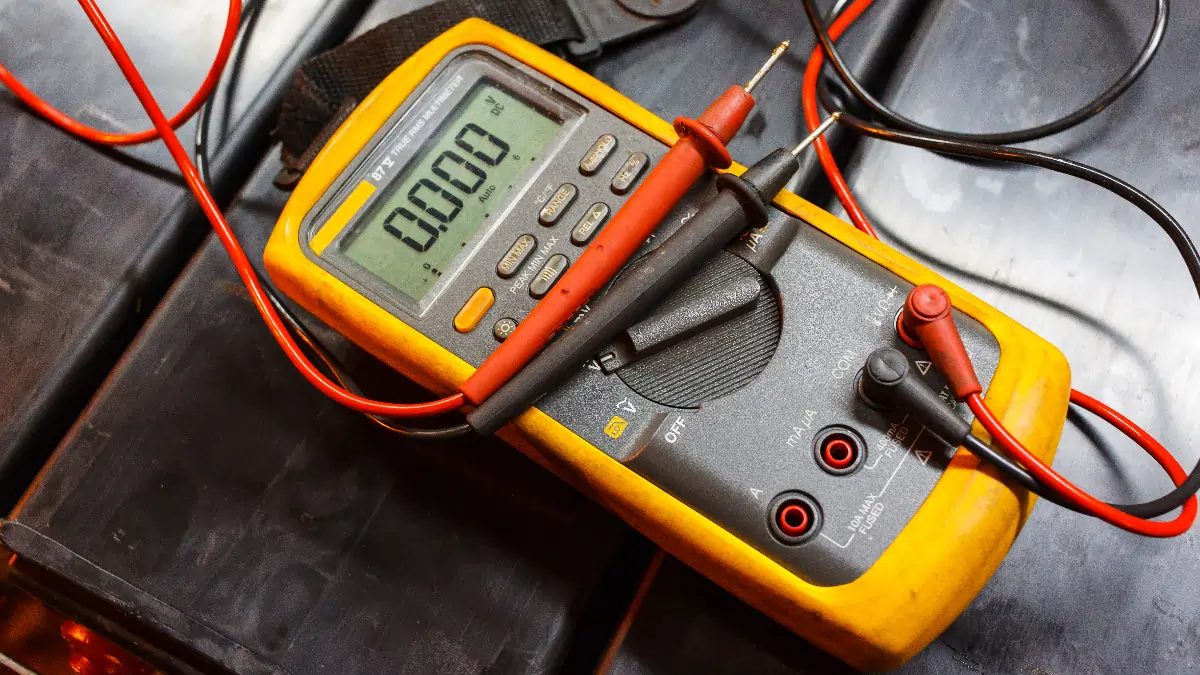You Don’t Have To Be An Engineer To Know RV Electrical System Basics
Most people don’t often think about electricity beyond whether it works when they plug something in or whether or not their car battery has enough juice to start their vehicle. Nor do they think about those two power sources being completely different types of power. However, when you own an RV, it can be essential to understand the difference between AC and DC power and how your RV uses both. Knowing how your RV electricity system works can help you safely use it and diagnose issues when they arise.
Note: When it comes to fixing electrical systems, keep in mind that electricity can be deadly. It’s always safest to consult a professional for electrical work.
What Is Electricity
Don’t worry; this isn’t going to get too in-depth. Electricity is the name humans have given the flow of electrical energy from one location to another. As you already know, everything we can see in existence is made up of atoms. An atom comprises three major components, neutrons, protons, and electrons. The electricity magic happens from the relationship between the protons and electrons.
Protons are positively charged while electrons are negatively charged, and each atom typically has the same number of electrons and protons, which cancels out their charge. Another way to say this is the atom’s charge is neutral. When you attach a power source to a wire like a battery or a generator, you force electrons to break away from their atom and attach to others nearby. An atom with an extra electron has become negatively charged, and the atom missing an electron has become positively charged.
Positive atoms attract electrons, while negatively charged atoms want to give their extra electrons away. The result is a constant current of electrons moving from one atom to the next resulting in electricity.

Direct Current
A direct current is an electrical current that flows in one direction. Batteries produce direct current or DC power. It doesn’t matter what kind of battery you have, it will always produce DC power. This makes it easy to determine whether a device or appliance in your RV works on DC power or not. If it works without plugging your RVs power cord in or turning on an inverter, it’s part of the DC system and runs off your battery.
A basic battery comprises two types of metal and an electrolyte. When charged, a chemical reaction results in the negative side of the battery becoming negatively charged. In other words, it has a lot of free electrons to give. For the negative side to get all those electrons during charging, the positive side gives them up. Since the positive side of the battery is missing electrons, it is positively charged.
Simply put, a battery is a bunch of negatively and positively charged atoms that just want to be neutral again. So when a wire is connected between the terminals, the electrons start flowing through it and any electronic device we put on their path in one direction, from negative to positive.
Typical DC RV electricity systems include:
- Lights
- Fridge (when on propane mode)
- 12V car-style plugs
- Propane Furnace (The furnace fan is DC)
- Radio(s)
- Stove Range Fan
- Roof Vent Fans
- Leveling systems
- Slideout motors
- Water Pump
- Propane Alarm
The above list isn’t all possibilities, and every rig is different.
Alternating Current
Alternating current or AC is so named because instead of flowing in one direction, the flow of electrons changes back and forth, or alternates, really fast. Like batteries, the current direction is a result of how the electricity is generated. AC power is made by spinning wire between the two poles of a magnet.
Unlike the chemistry experiment of batteries, when a magnet moves past a conductor like copper wire, it pulls and pushes electrons according to its north and south polarity—the movement results in electricity but when the magnet or wire is in motion. To get a constant electrical current, generators either spin the magnet around the wire or the wire within the magnate. Watch the short video below for a good illustration of the current going back and forth as the wire is affected by the different polls of the magnet.
Which RV Electricity Systems Run On AC Current?
Chances are that if you can’t run the device or appliance without being plugged in, it runs off AC–or your battery is dead. But, common AC appliances in RVs are:
- Anything that you plug into a household wall socket
- Air conditioners/Heat pumps
- Refrigerator (when on AC mode)
- Microwave
- Electric water heater
So How Does your RV Electricity System Tell The Difference?
Modern RV electricity systems are pretty smart, but even older systems are fitted with a power station.
Power Station
The power station of your rig is like the traffic control center for RV electricity. It houses two types of safety features. You will find fuses for the DC system and breakers for the AC system. The power station also has a power converter that turns the AC power from the RV park pedestal into DC power to charge your battery and run your DC appliances.
Newer RVs may also have a separate inverter that will turn DC power from your battery into AC power to run some appliances while not plugged into shore power.
Diagnosing Basic AC and DC RV Electricity Issues
Knowing how the two types of electricity in your RV work and where they come together in your rig can make diagnosing basic RV electricity issues easier. When something isn’t working, go through the following checklist to determine the cause.
- Determine whether the AC or the DC system is affected: For example, if your microwave and air conditioner aren’t turning on, or your fridge has oddly switched over to gas, but all of the lights work, you can assume the issue is your AC system. On the flip side, if you notice the lights won’t turn on, your water pump isn’t working, the vent fans don’t turn on, etc., they aren’t receiving DC power.
- Work backward until you discover the issue: Start with inspecting the problem appliance. For example, there’s no reason to suspect an issue with your DC system if it’s just a burned-out bulb.
- Be safe: RV electricity can be deadly. Even the DC system can be very harmful and, at the least painful if mistakes are made. Never handle any bare wires or poke around with metal tools that aren’t properly insulated. If you do attempt to inspect your system further than flipping a breaker back on or changing a fuse, disconnect the battery and unplug your RV from any AC power beforehand. The safest method is to leave electrical work to professionals when in doubt.
When Your RV AC system isn’t Working
If your AC system isn’t working, the following video will show you how to troubleshoot the most basic issues of a tripped breaker or GFCI outlet.
When Your DC RV Electricity isn’t Working
Just like checking breakers for your AC system, it’s much easier to show rather than explain how to diagnose those issues. So if you have determined one of your DC appliances or circuits isn’t working, follow the tips in the video below to check for blown fuses.
Keep an Eye Out For part 2
Hopefully, this article has given you insight into how your RV electrical system works and the basics of troubleshooting minor issues by determining whether the problems are AC or DC-related. This is the first part of a planned series on RV electricity, so keep your eyes peeled for part 2, where we will discuss Volts Watts, Amps, and some products that make knowing your RVs current power usage a breeze. Be sure to sign up for our Newsletter below to get all the latest Camper Smarts info delivered to your inbox.




